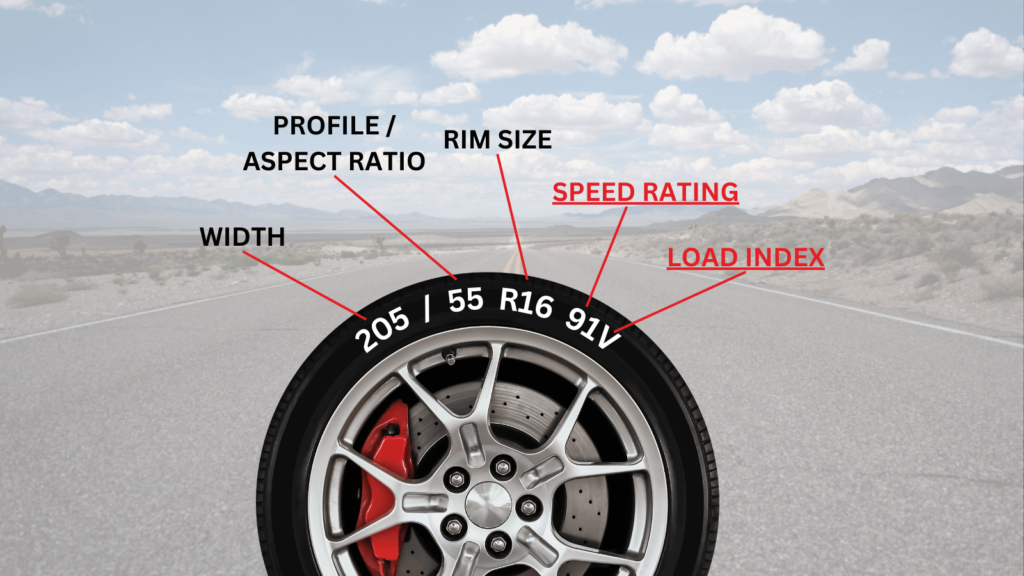What is Load Index and Speed Symbol
Understanding Load Index and Speed Symbol for Tyres
Choosing the right tyres for your vehicle involves more than just checking the size. Two key factors that affect safety and performance are the load index and speed symbol. Understanding these ratings ensures you select tyres that meet your vehicle’s requirements.

What is the Load Index?
The load index is a numerical code indicating the maximum weight a tyre can support when properly inflated. You’ll find this number on the tyre sidewall, usually following the tyre size (e.g., 205/55R16 91V).
Here are some common load index ratings:
- 85 – 515 kg per tyre
- 91 – 615 kg per tyre
- 95 – 690 kg per tyre
To determine the correct load index, refer to your vehicle’s manual. Using tyres with a lower load index than recommended can compromise safety and handling.
What is the Speed Symbol?
The speed symbol (or speed rating) is a letter that indicates the maximum speed the tyre can safely sustain under load. It is located next to the load index on the sidewall (e.g., 205/55R16 91V).
Here are some common speed ratings:
- T – 190 km/h
- H – 210 km/h
- V – 240 km/h
- W – 270 km/h
- Y – 300 km/h
Your speed rating should meet or exceed your vehicle manufacturer’s specifications. A lower rating can affect performance, while a higher rating may provide better stability and control.
Why Are These Ratings Important?
Using the correct load index and speed rating helps maintain:
- Safety – Prevents tyre failure due to excessive weight or speed.
- Performance – Ensures proper handling, braking, and ride comfort.
- Durability – Reduces premature tyre wear and potential blowouts.
Always check these ratings when purchasing new tyres to ensure they are compatible with your vehicle’s requirements. If in doubt, get in touch with us for guidance.
